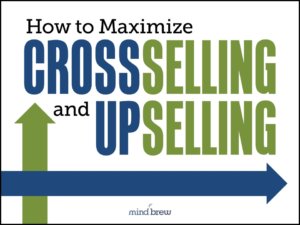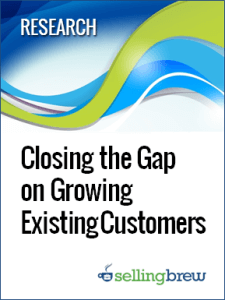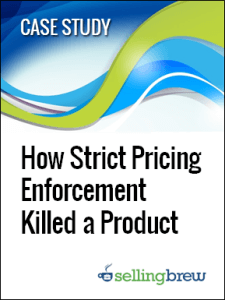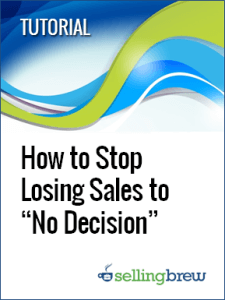Most sales operations will acknowledge that they aren’t getting all the business they could be getting from their existing customers. Most sales operations will also admit that they’ve been struggling…sometimes for years…to make any meaningful progress on account development and expansion.
Why? What’s holding them back?
Through our research, we’ve identified seven major myths and misconceptions about account expansion that are preventing many sales operations from capturing a lot more of this low-hanging fruit:
“The business we’re missing probably doesn’t amount to much.”
In the absence of hard data, it’s easy to assume that it’s a rounding error. Sure, you’re missing some business. But it can’t be more than 1-2%, right? However, in the absence of data, it’s just as valid to assume that you’re missing the 15-20% that other companies have discovered when they got serious about it. I’ll even go out on a limb and suggest that if you really don’t know how big the opportunity is…and you’ve never taken any meaningful steps to quantify it…that’s a pretty good sign that it’s likely to be much bigger than you think.
“Yeah, but customer retention is a much bigger priority for us.”
Retention and expansion are too often viewed as separate things. In reality, one of the most effective ways to retain a customer is to grow your business with that customer. For example, getting a customer to buy more of whatever they’re buying reduces their defection risk. And getting a customer to go from buying from one product category to buying across six different lines significantly increases your odds of retaining that customer. In other words, customer expansion IS customer retention.
“Sure, but customer acquisition is a much bigger priority for us.”
It’s sometimes difficult to recognize the interplay between expansion, retention, and acquisition. The more revenue you’re able to extract from existing customers over time…expansion and retention…the fewer new customers you’ll need to acquire to hit your growth targets. And too, the more value you’re able to extract from customers post-acquisition, the more you can profitably invest toward acquiring those customers in the first place. More effective expansion enables more effective and efficient acquisition.
“Sales reps can make this happen if they just focus on it more.”
There’s a very common notion that this is just a matter of effort and attention on the part of individual salespeople. The thinking here is that with enough coaching and cajoling, sales reps will work harder to extract everything they can from their existing book-of-business. However, the nature of the problem itself is such that it’s virtually impossible for individual reps to solve it—they have no way to see what they’re missing, they have too many accounts to investigate manually, and their manual investigations can’t get at the whole truth anyway! Simply put, sales reps are not the right tool for this job.
“Customers will tell us what they’re buying from someone else.”
When sales reps manually investigate an account for expansion opportunities, what do they do? Typically, they’ll pick up the phone or send an email to ask their current contact about other things they’re buying or other suppliers they’re working with. At best, the rep will get a top-of-mind response about something the buyer is thinking about right at that moment. And in many cases, the buyer for one category of product won’t know much about what’s happening outside their area of responsibility. Manual investigation is not very productive because customers simply do not have the time or inclination to go through your product catalog and reveal to you all the products they’re buying from someone else.
“Of course, we really only need to focus on the big customers.”
As salespeople cannot possibly manually investigate every account in their book-of-business, they inevitably focus their attention on just the biggies. Sometimes, this focus on the biggies is even supported by others who intuit that the biggest customers should have the biggest expansion opportunities. Very often, however, the biggest customers are big precisely because they’re already giving you all they can. In fact, the biggest untapped growth opportunities are often found much further down the list—i.e. customers who seem smaller precisely because they aren’t yet buying everything they could.
“If it’s not in the data, there’s no way to see what we’re missing.”
Obviously, if a customer is buying more volume from someone else…or buying other lines of product from someone else…these other transactions are not going to show up in your sales history. So, it’s easy to just throw up your hands and conclude that you can’t possibly see what isn’t there. But imagine I showed you a picture of dog with one ear. Because you know that a dog should have two ears, you would look at that picture and instantly identify what’s missing, right? Similarly, there are certain analytical techniques you can apply to your historical sales data to paint a relatively accurate picture of what a customer should be buying. And by comparing that picture to the actuals, you can get a pretty good idea as to what the customer is buying from someone else.
The odds are high that your sales operation is being held back by one or more of these myths and misconceptions about account expansion. After all, from our vantage point, these notions appear to be very common. But if that’s the case, don’t waste a second feeling bad or frustrated about it. Instead, sidestep the myths, take a different approach, and capture the opportunity once and for all!














